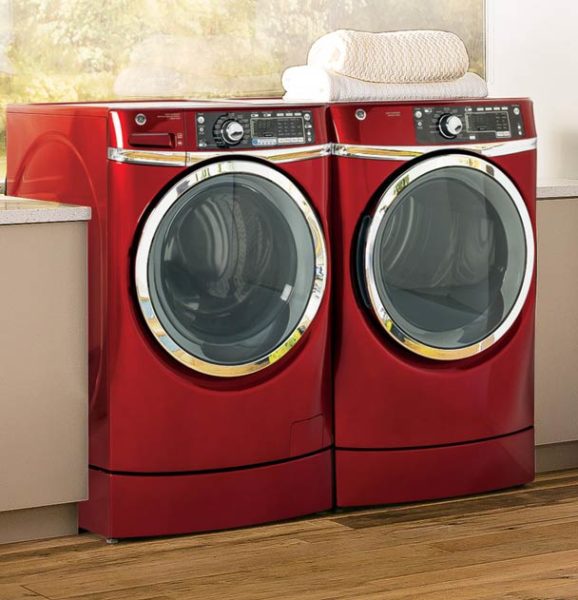
Front Load Washing Machine Foul Smell
Do you have a mystery laundry room or washing machine odor? If you do, the culprit is most likely your front loading washing machine. Many front loading washing machines develop a musty, mildew, rotten egg odor. The good news is that its curable with a little DIY maintenance.
Front loaders are efficient and use very little water and as a result, they require the use of high-efficiency detergents. Too much detergent or the wrong kinds of soap and softeners, cause rinsing issues and soap scum build up. When this happens, a layer of soap scum develops on the washer drum, which invites mildew, bacteria, mold and that foul washing machine odor smell.
Listed below are a few maintenance steps you can take to keep your washing machine rotten egg odor to a distant memory.
Clean the Washing Machine – to Prevent Odors
Here is one approach I use to keep washing machine odors away:
I’ve tried running a cycle of bleach and it does work, but not as good as baking soda and vinegar. These two ingredients break up residue stuck to your drum and kill any mold that might be present. They’ll also help remove any foul odors.
DIY Washing Machine Oder Removal Steps:
- Mix 1/4 cup of baking soda with an equivalent amount of water. Add this solution to the machine’s detergent container.
- Pour two cups of white vinegar into the drum, then run a normal cycle, hot water, empty.
- Scrub away any remaining grime – don’t skip this step, especially at the rubber gasket. Remove stubborn spots with a kitchen sponge scrubbing pad and a mixture of one part white vinegar, one part water
- Repeat once a month for maintenance
Photo: ConsumerReports.com
Clean the Rubber Gasket
Front loading washers also have a rubber door gasket to keep water from leaking out. Dirt, soap, and bits of fabric can get trapped under the gasket, creating nasty smells.
Clean the Trap Filter Pan
Not all front loaders are the same, my washer has a drain trap filter pan that is accessed by removing the service panel. When I clean my washing machine, I also clean this drain trap. It usually is a trap for lint, coins, screws and other things collected from my jean pockets. It also gets pretty smelly. Manufacturers and models vary, so you need to check your manual for your specific instructions. Here are some generic instructions:
- Open the small access panel, at the bottom at the front of the machine.You may need a nut driver to remove screws.
- Look for a small hose and a debris filter.
- The hose drains leftover water out of the washer. Drain the hose into a bucket. Be prepared, because it might be a few gallons of water.
- After draining the water, remove the housing for the debris filter by turning it counterclockwise.
- Clean off lint and other debris. Look up in the area behind where this filter sits and check the drain pump impeller ensuring that too is clear of debris.
Leave the Door Open to Dry
Once you’ve got the soap situation under control, it’s time to make sure the washing machine drum doesn’t stay damp for long periods of time. Avoid leaving wet laundry overnight. Remove your laundry promptly after the cycle ends, and be sure to leave the washer door open when it’s not in use, so the inside can dry out.
Use less Detergent that Recommended
My front loading washing machine has a mark indicating how much detergent to add. I use High-Efficiency [HE] detergent and only add enough to reach the halfway mark. Adding oxygen-free bleach to the detergent will prevent mold. If your system has an integrated cleaning cycle, use that instead of the normal cycle.
